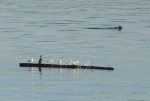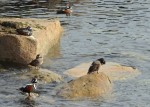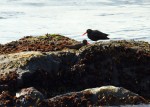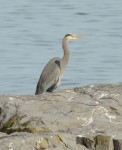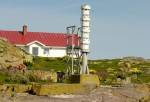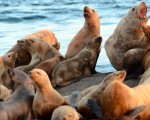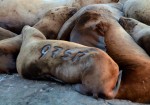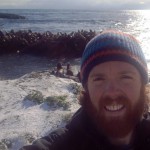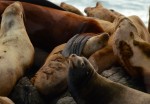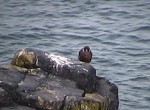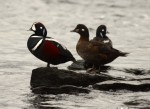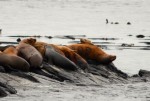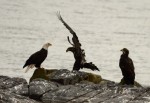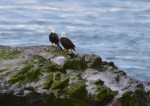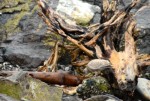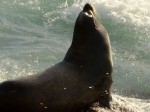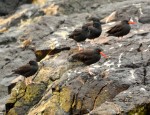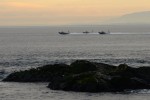Sunny with occasional clouds
Wind: 0-5 knots from N and switching around to SW throughout the day
Air temperature: High 10C, Low 6C
Ocean temperature: 8.9C
A great blue heron hung out on northeast side of Great Race for the afternoon. The oystercatchers are travelling around in pairs and are quite vocal. The gulls have spread themselves out around the island as they start to find nesting sites. Chunk returned to Great Race during the night. He spent the day resting against a boulder and the rock below the helicopter pad. The female elephant seal is relaxing in the same spots as yesterday, to the west of the main house.
Today’s census results:
Elephant Seal: 2
Steller Sea Lion: 18
California Sea Lion: 28
Harbour Seal: 41
Bald Eagle: 6 (3 adult, 3 juvenile)
Raven: 2
Great Blue Heron: 1
Double Crested Cormorant: 9
Brandt’s Cormorant: 15
Black Oystercatcher: 8
Canada Goose: 17
Pigeon Guillemot: 36
Gull: 103
Harlequin Duck: 11
Surfbird: 2
Black Turnstone: 15
Savannah Sparrow: 1
One eco tour boat and one recreational boat visited the reserve today.
- Gulls and a cormorant take a log ride through the current of Middle Channel. In the background, a pigeon guillemot uses its own energy to take flight.
- Harlequin ducks preening and sunny themselves
- Black oystercatchers
- Great blue heron
- A harbour seal blends in with the rock, barnacles and intertidal plants.
- A raven eats the brains of the carcass of an elephant seal pup.
- Colourful spring flowers surround the fog horn

